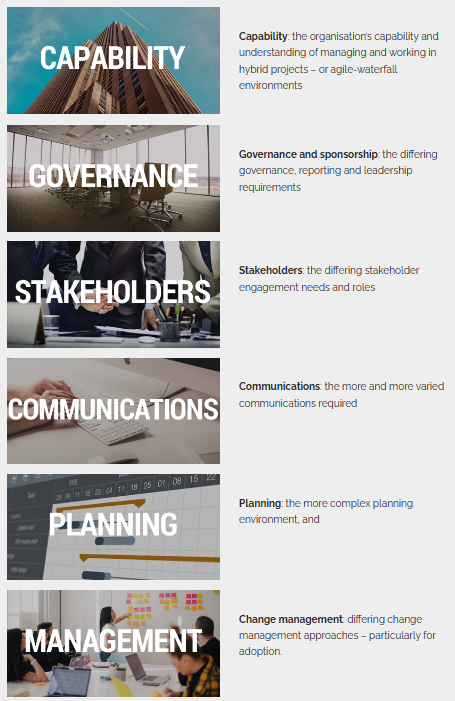I can already hear the question ‘ …but surely these are ‘normal’ project management concerns…’. And my answer, ‘Well yes, of course, but …’
How many project managers have actually had the opportunity to manage a mix of projects? Particularly using either an agile product development approach or the more traditional waterfall – let alone a combined hybrid approach? I am sure this is increasing in number, especially for the more experienced project managers. However, it’s almost certainly not as many as are needed in today’s world.
Why should we expect project managers who are used to managing one type to understand the consequences of, or simply be knowledgeable about, managing the other?
Especially if you agree with me that:
- appropriate levels of capability are critical.
- understanding the strengths and weaknesses of your project community is essential.
- providing development and support where required is vital
to achieving enhanced project performance and successful outcomes.
Let’s start by considering the enhanced knowledge, competences and approach that a hybrid project manager needs.


